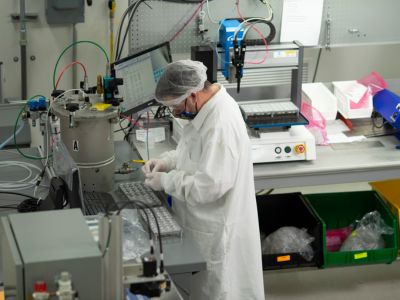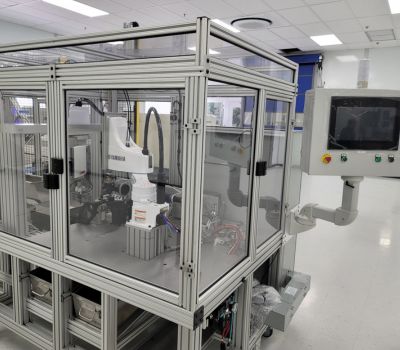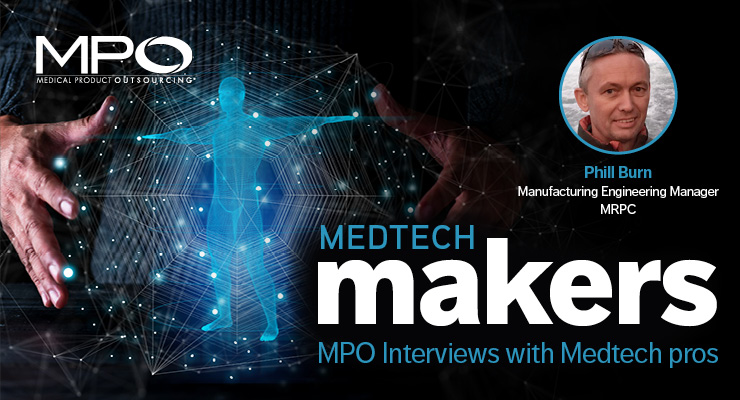Over the years, many pointed at automation as the downfall of the American worker. Fast-forward to today when numerous companies are struggling to find skilled labor and automation becomes one potential solution to supplementing their needs. Automation is not a replacement for human resources; rather it provides companies the flexibility to better engage their human work force.
Within the medical device manufacturing industry, automation can eliminate human error or a lack of appropriate training with a high degree of repeatability and quality. It can also be leveraged for multiple tasks as changeover to a different project can be performed in a timely manner.
To offer greater insights into the benefits and opportunities for automation in medical device manufacturing, Phil Burn, manufacturing engineering manager at MRPC, provided responses in the following Q&A. He addresses a number of common questions OEMs have when considering automation or a supply partner who uses automated systems.
Sean Fenske: When people mention automation, images of robots is often what comes to mind. Can you briefly explain the full breadth of automation within the manufacturing space?

Transforming manual and labor-intensive processes into fully automated procedures is just the first step in a journey that leads to a lights-out environment, where self-monitoring machines communicate with each other and use artificial intelligence and real time data to continually modulate processes and material flow, diagnosing and resolving issues autonomously, without the need for human intervention.
At MRPC, we consider a robot as a potential component of many, for an automated system. Our strategy for automation consists of various sub-systems, employing cameras and optics, part feeding machines, conveying and transfer stations, and sensors for process monitoring. These sub-systems extend beyond the manufacturing floor to the enterprise computer systems, such as automated workflows and material requisitioning and planning systems. Although sub-systems are connected physically, there is a digital connection opportunity that is deployed, as needed.
Fenske: For what types of applications or tasks (within medtech manufacturing) is automation typically used? Is it better suited for some actions as opposed to others?

Automation can be used to perform monotonous tasks while a company re-deploys its workforce to perform more value-added work.
Fenske: As more companies reassess their manufacturing partners and locations, what role can automation play in this decision?
Burn: Many organizations were in the business of offshoring manufacturing to lower cost countries like China, India, and Vietnam, not too long ago (i.e., prior to 2020). With those countries now experiencing a shrinking workforce, it makes more sense to keep business closer to home, and to empower and train the labor force to perform more value-added tasks. These value-added tasks can be performed alongside the technology and automation that takes care of the repetitive and mundane tasks.
Fenske: How does automation help alleviate the labor shortage?
Burn: The labor force is slowing down significantly. With that in mind, many organizations can leverage automation to fill some vacancies, specifically those that focus on performing repetitive tasks, thus reducing the need for direct labor. While this may sound like a goal of trying to replace humans with robots, it is more about implementing automation to perform monotonous tasks, and re-deploying the workforce to perform more value-added work.
Automation that is simple, small, modular, and re-deployable is flexible in that it can be moved between workstations when there is a shortage of labor to perform different operations with very little in the way of changeovers.
Fenske: If you outsource portions of your manufacturing (or all of it), are there benefits to working with a service partner who offers automated solutions? If so, what are the advantages?
Burn: A more competitive price, higher quality, and the ability to pivot quickly are the key advantages. In terms of price, the cost of goods manufactured using automation is likely to be lower due to reduced labor overhead, which should result in a more competitive price. The probability of a quality issue is also reduced, as it is less likely an issue will arise as a function of a training issue, or as a variation in skill set or ability gap in the work force. Additionally, the ability to pivot quickly between low run, mid-run, and high-run projects helps organizations ramp up their medical device manufacturing projects quickly.
Fenske: What factors do companies often overlook in terms of going with automation for a portion of their manufacturing? Are there specific considerations they must keep in mind?

Many organizations can leverage automation to fill some vacancies, specifically those that focus on performing repetitive tasks.
Defining what is out of scope can also help avoid misunderstanding of intent. One further consideration might be the realization that while employing automation has allowed the re-deployment of the operator, a resource that can troubleshoot and/or maintain the automation is still necessary.
Fenske: Do you have any additional comments you’d like to share based on any of the topics we discussed or something you’d like to tell medical device manufacturers?
Burn: MRPC has been incorporating automation into our medical manufacturing process for a number of years, and we plan to continue. For low volume/high mix products, MRPC has deployed small, modular, flexible, and re-deployable automation. For this reason, we deployed collaborative robots (co-bots), which have smaller footprints and can safely function alongside the workforce. For high volume/low mix products, automation solutions can be more complex. As such, we have deployed machine-mounted cartesian robotics and customized end-of-arm-tooling (EOAT) to perform the function of part extraction from molding processes, to perform some level of secondary operations, and to hand-off parts to the next process in the cell.
Transforming manual and labor-intensive processes into fully automated procedures is just the first step in a journey that leads us to a lights-out environment. An environment where self-monitoring machines communicate with each other and use artificial intelligence and real time data to continually modulate processes and material flow, diagnosing and resolving issues autonomously, without the need for human intervention.
Ultimately, we believe the use of automation in the medical device manufacturing industry has become a need for both the manufacturers and for their clients. Pivoting quickly from low-run, to mid-run or high-run projects, ramping up quickly, lowering project and client costs, and creating the ability to redeploy employees to more value-add, less repetitive tasks are prime reasons for implementing automation.
Click here to find out more about MRPC >>>>>













